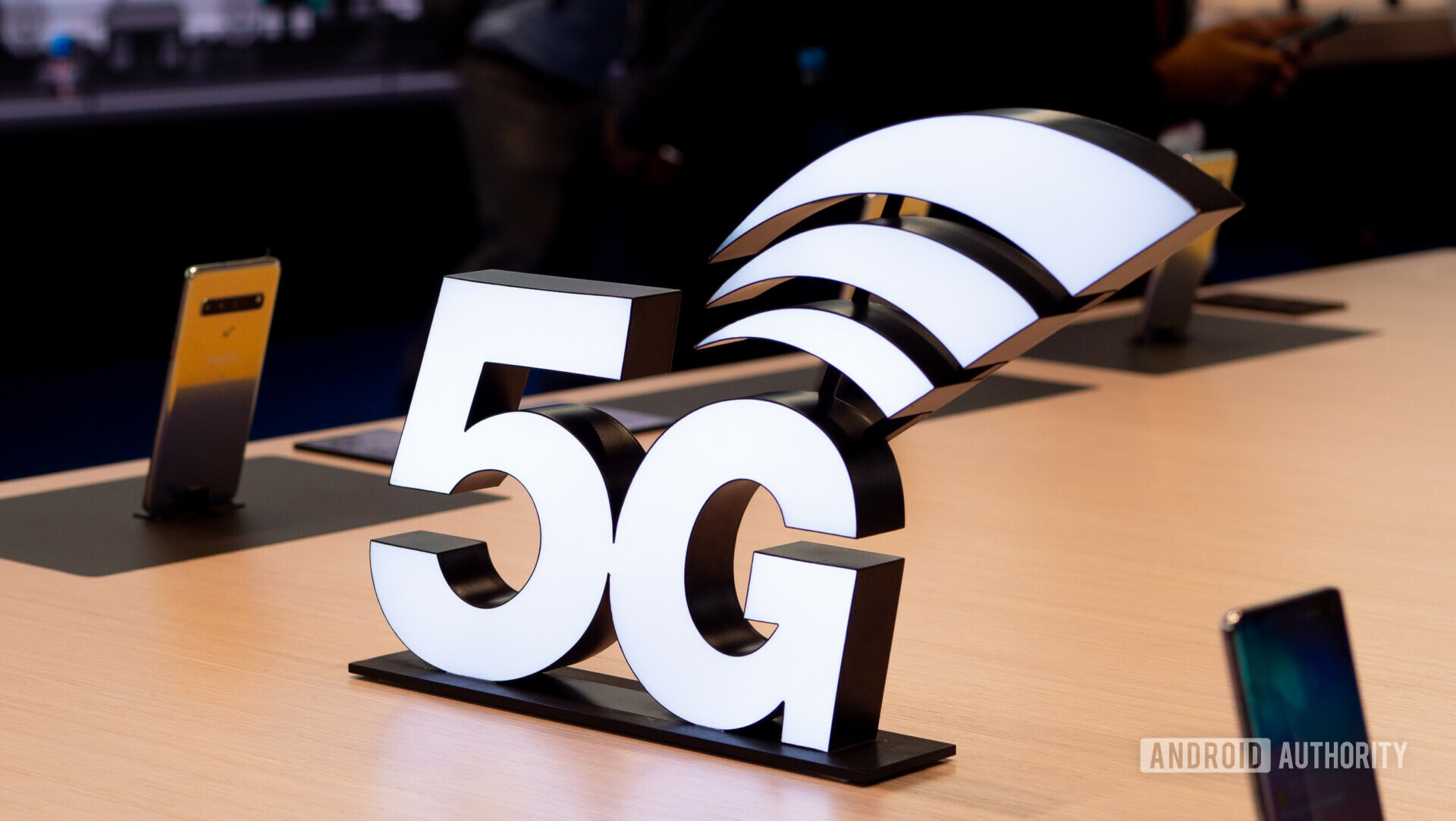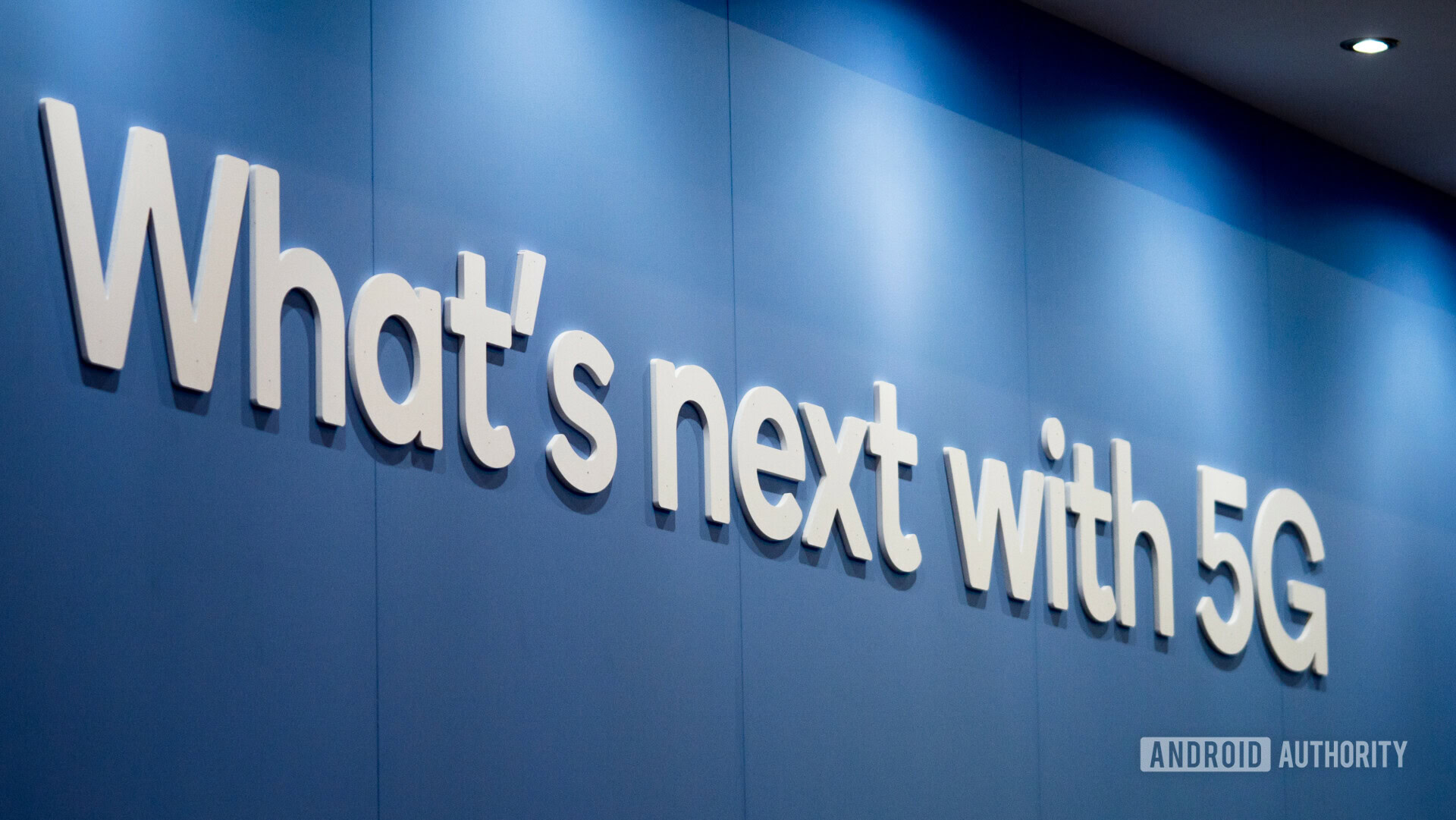Affiliate links on Android Authority may earn us a commission. Learn more.
What the tech industry thinks 5G will do for us

You couldn’t move without stumbling over a 5G product at MWC this year. From ridiculous trend followers to the first 5G smartphones like the Samsung Galaxy S10 5G, it’s clear this next-gen network technology is going to be 2019’s defining trend — for better and for worse.
You’re not alone if you’re still struggling to understand what all the hype is about. 5G means something different to everyone. Maybe it’s the missing piece in a futuristic VR world. Maybe it’s going to transform cities and healthcare. Maybe it’ll just let you download that 4K movie a bit faster.
I’ve put together this collection of quotes from talks and interviews from the show to see if there’s consensus around what 5G is going to mean for consumers.
What the companies say
Qualcomm
Qualcomm’s MWC booth was bustling with 5G tech demos and devices, including a cloud gaming demonstration using OnePlus’ 5G prototype. Speaking at the company’s MWC pre-brief, Qualcomm’s Director of Business Development Ben Timmons laid out a number of likely (and a few pie in the sky) consumer use cases for 5G.
What’s the thing that’s special? It’s capacity, it’s download speed, it’s latency.
“What’s the thing that’s special? It’s capacity, it’s download speed, it’s latency. Those are the really, really key starting 5G elements. But those are associated with some other stuff going on at the same time. The continuous improvement in the sheer processing capability of Snapdragon, supported by all of the elements as well — the camera functionality, graphics, location.”
A few potential use cases mentioned include virtual and augmented reality running with cloud processing in real time over a 5G network. Watching, sharing, and collaboratively creating content were other ideas, along with cloud gaming, AR shopping (which Timmons agrees is probably a bit of a stretch), and real-time language translation.
Intel
Intel may not be first with consumer 5G hardware, but the company has big plans on the infrastructure side and a long-term strategy. General Manager of 5G Strategy Rob Topol sees three phases of how 5G will roll out: first is broadband, which is what we’re seeing now, then low latency, and third is machine-to-machine type communication. Intel doesn’t envision faster speeds as a particularly compelling improvement for smartphones, but does see more potential in low latency aspects.
“The way that augmented reality and VR can be consumed or the way that you can use 5G for retail and AI applications where it’s more about the response time of the network, that brings in more excitement,” Topol continued.
It can give you 100GBs within just a few seconds while you're sitting at the intersection.
As well as the usual AR and VR use cases, Intel also sees promise in ideas like smart cities and automotive. For example, even using mmWave for speedy updates to your car.
“You could pull up to a stop light and a mmWave antenna can provide a burst download or update to the car. It can give you 100GBs within just a few seconds while you’re sitting at the intersection.”
Intel is planning to launch its own multi-mode 5G modem for consumer products by the end of 2019; it could appear in products in early 2020.
BT
Speaking on the topic of driving future uses cases during a 5G Panel, Marc Allera, CEO of BT’s Consumer brands said:
“When we launched 4G back in 2012 nobody called Netflix, Uber, and the explosion in social media platforms. What we do see is that when we build faster, better, more reliable networks, app developers can do more things, consumers can do more things, and the imagination of developers in serious applications, as well as fun, is unlimited.”
Not a lot of direct insight there, but EE is banking on that killer use case to sell its upcoming expanding 5G network.
CloudMinds
CloudMinds develops cloud-based AI that controls everything from robots to virtual avatars. During our chat with them at MWC, the company was very keen on the latency angle and how guaranteed latencies will make possible applications that are currently not feasible.
Examples of these low latency applications include robots controlled through a smartphone from the cloud rather than requiring demanding local processing. With low latency, the processing can be offloaded to the cloud, which will make robots smarter, cheaper, and more versatile. Another option could be virtual avatars; with 5G, we’ll be able to interact with cloud-controlled digital avatars in real time, without any jarring lag to break the illusion. In other words, CloudMinds sees cloud computing as a big driving factor for upcoming 5G applications.
Arm
Arm might be best known for powering billions of smartphones and other devices around the world. The company is a major player behind 5G too, from hard-drives and servers, to data transmitting base stations. Out of all our interviewees, Arm perhaps gave the most concrete vision about just how big of a shift 5G represents.
“The internet is about to go through a substantial architecture change,” Arm’s SVP of Infrastructure Business Unit Drew Henry told us.
“Today it’s designed to push data out, such as when you’re watching YouTube or Netflix videos. But soon it’s going to be about consuming data coming back in that’s being generated by all these devices. That change in the flow of data and where processing needs to happen, where data gets stored, and how much data you bring back to the core, is a completely different architecture.”
Arm is also big into machine learning and AI, and sees these technologies as a key component of upcoming 5G networks. Henry sees the growing need for these technologies both in the back-end and in devices, simply to handle the huge amount of data that upcoming devices are going to generate.
The internet is about to go through a substantial architecture change
Henry noted that the internet currently transfers over 150 exabytes of data every month, with most of it – up to 80 percent – being video content. That’s already a lot, but traffic could balloon as more devices come online.
“If you deploy 1 billion HD cameras, like a Nest camera, which is not that inconceivable, that will generate 450 exabytes of data or three times the amount of data that goes across the internet today. You had better make decisions right on the device about whether it should turn on and off or run in HD,” Henry said.
In other words, AI doesn’t just have to be on consumer devices, it’s going to be key to optimizing and directing data around an ever more congested internet too.
MediaTek
Our own Hadlee Simons sat down with MediaTek’s Finnbar Moynihan and Kevin Keating to chat 5G at MWC. General Manager of Corporate Sales Finnbar Moynihan’s believes “the next 18 months are going to be shaped by the rollout of 5G devices.”
“MmWave is the foundational fundamental technology that’s going to shape a lot of things that we can’t even imagine yet, because of the new spectrum, the big wide bandwidth it opens up, the latency,” Moynihan said.
Like other major industry players, MediaTek sees huge value in the low latency of upcoming 5G networks. Besides consumer applications, Moynihan highlighted “industrial applications, auto applications, and fixed wireless and broadband type applications” as the main fields for innovation enabled by 5G.
Meanwhile, marketing manager Kevin Keating offered a slightly different outlook, suggesting that Edge AI is something worth looking at. Beyond that, it’s a case of “build it and they will come.”
“Until you actually start using [5G] and see what you can do with it, you can’t really imagine how you’re gonna change markets and industries with technology you don’t have in your hands,” he said.
Motorola
Motorola is one of the first smartphone manufacturers with a consumer 5G device and clearly sees plenty of potential. Although the company is under no illusion that everything will be smooth. The company’s Director of Product Operations Doug Michau acknowledged there’s a level of consumer frustration around 5G, caused by the fact that 5G can take so many forms. “Autonomous vehicles, remote surgery, and all these different applications, it’s hard to specify clear consumer benefits of 5G speed.”
It's hard to specify clear consumer benefits of 5G speed
Michau cited familiar tropes about the unforeseen revolution of Uber, Snapchat, and Facebook with 4G. Motorola, like many other companies, isn’t sure what the breakthrough 5G use case will be, but believes that cloud gaming could be one of the more popular avenues.
Worryingly, Motorola outlined a few of the differences that we might see in regional 5G deployments. Specifically, 3.5GHz, sub-6GHz deployments in Europe require FDD implementations that need dynamic spectrum sharing. Current modems are “not a really good solution” for these countries yet, making it tough to “deliver a truly global 5G device.” Qualcomm’s upcoming Snapdragon X55 modem should make it easier to deploy global releases.
OnePlus
Speaking at a panel on 5G with Qualcomm and BT/EE, OnePlus‘ Carl Pei also couldn’t nail down exactly what 5G would bring to consumers. He’s banking on developers to come up with something neat.
“In the 5G era, things will become much more seamless.”
“We’re all looking for that killer app. What’s the use case that’s really going to drive 5G adoption? We’re not too worried about it, the same thing happened with 4G. … We’re going to do our best to make sure that 5G gets rolled out as quickly as possible, but we also need app developers to help us find the best use case for 5G,” Pei said.
Sony
Sony’s Vice President of Marketing Don Mesa, much like OnePlus’ Carl Pei, isn’t sure exactly what 5G will look like, but still sees promise.
“A lot of people say that 5G is a technology that’s waiting for a problem to solve.”
He went on to say, “I think it is interesting to see truly what 5G can do. It’s hard to theorize when people can talk about in an ideal setting about how 5G can work.” “In real-world settings, I’m very curious and very much looking forward to seeing how far cities popping up with 5G setups can push that.”
Samsung
We also spoke to Samsung at MWC about 5G and the new Samsung Galaxy S10 5G. Samsung states that 5G will be able to provide “really fast speeds for apps that require more data.” Examples could include UHD video sharing or downloading 8K UHD content when it eventually becomes available. In addition, Samsung sees plenty of potential in AR, gaming, and autonomous driving. Latency, once again, is going to be the key factor there.
Eventually there will be more and more applications.
As we’ve heard from just about everyone, Samsung isn’t trying to predict the future exactly. But the company firmly believes that eventually there will be “more and more applications.”

My two cents
All the companies brought up plenty of common ideas, including gaming, AR, and billions of connected devices coming online. New 5G-only technology could change some or all of these markets dramatically. However, few are making any bold predictions as to exactly the types of use cases 5G will bring to consumers. They simply don’t yet exist.
I heard the “no-one predicted Uber before 4G” argument countless times at MWC. It’s hardly a compelling sales pitch, but there’s truth to it. Eventually, some 5G-only revolutionary idea is bound to appear, but no-one really knows what it is or when it will arrive.
Until these use cases, and the types of devices you’ll need to run them, becomes clearer, I’d hold off on hopping aboard the hype train. The 5G revolution is upon us, but there no consensus about exactly what it will look like.